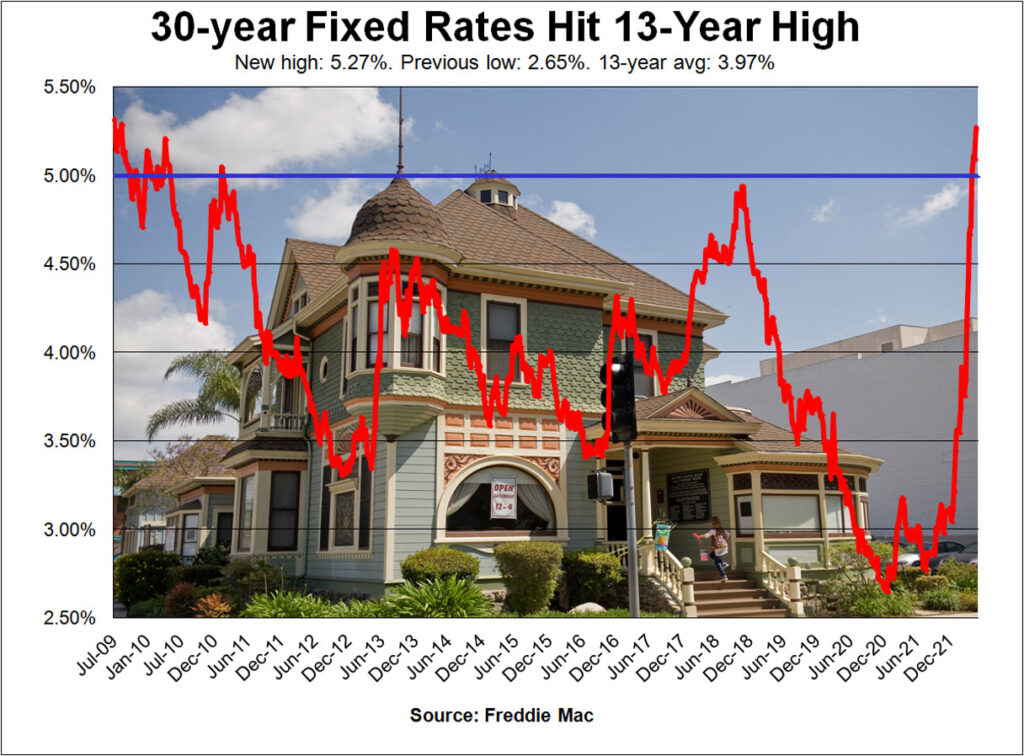
In 2016, Demarcus and Janice Holbrook cobbled together a down payment of just over $21,000, purchasing a Lake Forest home for $603,400 using FHA fixed-rate financing. Recently appraising at $900,000, their home appreciated nearly $300,000, or 50%, in five fast years.
The Holbrook’s now plan to pay off some consumer debt, update bathrooms, get rid of termites and start a nest egg to buy a move-up home, keeping this home as a rental. With two young children, they anticipate needing more space.
With two young children, the family of four now needs more space. Tapping that equity would give them enough cash to update their bathrooms, get rid of the termites and start saving for a nest egg to buy a move-up home, keeping this home as a rental.
“We are on top of each other,” said Demarcus. “We don’t have a life savings, so we are taking advantage of the property appreciation.”
But rather than sticking with a traditional, fixed-rate mortgage, they’re using an ARM — an adjustable-rate mortgage — to keep their monthly payments from rising too much.
Cashing out 80% of the home value through a $720,000 loan, they are chucking their current 4.1%, fixed-rate loan and switching to a 5-year adjustable-rate mortgage. Their ARM rate will be 4.875%, vs. a 6.375% rate for a fixed, high-balance cash-out refi. Their monthly principal and interest will be $3,810 for the ARM, or $682 less than the comparable fixed payment of $4,492.
With inflation at its highest level in 40 years, purchase and cash-out refinance borrowers are more pressed to seek the lowest, most affordable payments, even though they don’t necessarily want the long-term uncertainty of a 5-, 7- or 10-year adjustable.
Borrowing rates of all shapes and sizes continue to ascend.
The 10-year Treasury rate touched 3% this week. That’s more than double its 1.49% rate on Dec. 28 – the fastest time on record that the 10-year rate doubled. The second fastest time takes us all the way back to Sept. 7,1981, when the rate took almost four years to climb to 15.05% from 7.48% in October 1977.
Mortgage rates, which tend to follow the 10-year Treasury, also rose in record time.
Freddie Mac announced the 30-year fixed rate averaged 5.27% during the week ending Thursday, May 5, its highest rate since July 2009 and nearly double its all-time low of 2.65% in January 2021.
Thirty-year rates of 6% will be here before you know it.
Shorter-term monthly adjustable rates, those home equity loans typically tied to prime, jumped this week as well.
Citing everything from a strong job market, supply and demand imbalances, the Russian invasion of Ukraine, China’s COVID-related lockdowns and higher energy prices, the Federal Reserve increased the prime rate from 3.5% to 4%. That’s the biggest increase since May 17, 2020, when the Fed raised prime to 9.5% from its previous 9% rate two months earlier.
As a result, more borrowers are taking out adjustable loans to offset this dramatic rate rise.
This week, the Mortgage Bankers Association announced ARM market share at around 9%, compared with 3.9% a year ago. The total ARM market share was only about 5% for 2021, according to Guy Cecala, CEO and publisher of Inside Mortgage Finance.
Adjustable rates are trending in my shop as well. Almost three-fourths of the loans we originated over the last 45-60 days are going the ARM route.
Timing could be in your favor should you want to pivot to an adjustable rate.
Fannie Mae is predicting a recession next year. Even though rates in general will likely continue to climb, a cheaper ARM today could get refinanced into a falling fixed rate if a recession takes hold.
The cheapest jumbo adjustable I found was 3.75%. The cheapest interest-only adjustable was 4.5%.
Something else is in your favor. Several industry veterans have pointed to collapsing loan volume.
Most estimate an astounding 75% decrease in mortgage applications from 30 short days ago. Mortgage lenders are aggressively cutting staff. Lenders are starving for business. You might be able to haggle your way to an even better price on your adjustable-rate mortgage.
Freddie Mac rate news: The 30-year fixed rate averaged 5.27%, rocketing 17 basis points higher than last week. The 15-year fixed rate averaged 4.52%, 12 basis points higher than last week. The 5-year ARM averaged 3.96%, 18 basis points higher than last week.
The Mortgage Bankers Association reported a 2.5% increase in mortgage application volume from the previous week.
Bottom line: Assuming a borrower gets the average 30-year fixed rate on a conforming $647,200 loan, last year’s payment was a whopping $867 less than this week’s payment of $3,582.
What I see: Locally, well-qualified borrowers can get the following fixed-rate mortgages without points: A 30-year FHA at 4.75%, a 15-year conventional at 4.625%, a 30-year conventional at 5.25%, a 15-year conventional high-balance ($647,201 to $970,800) at 5.125%, a 30-year conventional high-balance at 5.375% and a 30-year jumbo purchase loan at 5%.
Eye catcher loan of the week: A 30-year jumbo adjustable mortgage, locked for the first five years at 3.75% with 1 point.
Jeff Lazerson is a mortgage broker. He can be reached at 949-334-2424 or jlazerson@mortgagegrader.com. His website is www.mortgagegrader.com.
Related Articles
Home loans and credit cards: How higher rates affect your finances
5 easy ways to get your hands on $1 million
Market hitting peak for cash-out refinancing
Home prices vs. sharpest rise in mortgage rates in 3 decades
Got an extra $646 a month? Southern California’s new homebuying pain
